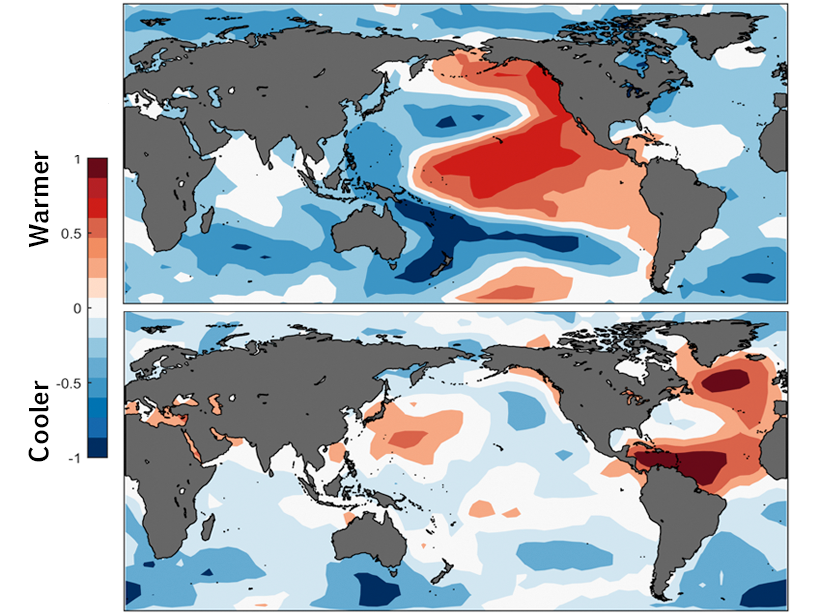Source: Geophysical Research Letters
From the early 2000s to the early 2010s, there was a temporary slowdown in the large-scale warming of Earth’s surface. Recent studies have ascribed this slowing to both internal sources of climatic variability—such as cool La Niña conditions and stronger trade winds in the Pacific—and external influences, including the cooling effects of volcanic and human-made particulates in the atmosphere.
Several studies have suggested that climate models could have predicted this slowdown and the subsequent recovery several years ahead of time—implying that the models can accurately account for mechanisms that regulate decadal and interdecadal variability in the planet’s temperature. To test this hypothesis, Mann et al. combined estimates of the Northern Hemisphere’s internal climate variability with hindcasting, a statistical method that uses data from past events to compare modeling projections with the already observed outcomes.
The team’s analyses indicate that statistical methods could not have forecast the recent deceleration in surface warming because they can’t accurately predict the internal variability in the North Pacific Ocean, which played a crucial role in the slowdown. In contrast, a multidecadal signal in the North Atlantic does appear to have been predictable. According to their results, however, its much smaller signal means it will have little influence on Northern Hemisphere temperatures over the next 1 to 2 decades.
This minor signal in the North Atlantic is consistent with previous studies that have identified a regional 50- to 70-year oscillation, which played a more important role in controlling Northern Hemisphere temperatures in the middle of the 20th century than it has so far this century. Should this oscillation reassume a dominant role in the future, argue the researchers, it will likely increase the predictability of large-scale changes in Earth’s surface temperatures. (Geophysical Research Letters, doi:10.1002/2016GL068159, 2016)
—Terri Cook, Freelance Writer
Citation: Cook, T. (2016), Was the recent slowdown in surface warming predictable?, Eos, 97, doi:10.1029/2016EO051477. Published on 11 May 2016.
Text © 2016. The authors. CC BY-NC-ND 3.0
Except where otherwise noted, images are subject to copyright. Any reuse without express permission from the copyright owner is prohibited.

